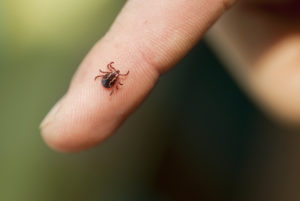
How to Safely Remove a Tick: A Step-by-Step Guide
Ticks are more than just an unwelcome nuisance; they can pose serious health risks to both humans and pets by transmitting diseases such as Lyme disease, anaplasmosis, and Rocky Mountain spotted fever. If you or your pet has been bitten by a tick, it’s crucial to remove it as soon as possible to reduce the risk of infection. This blog post will guide you through the process of safely and effectively removing a tick.
Why Removing a Tick Quickly Is Important
When a tick bites, it embeds its mouthparts into the skin and begins to feed on blood. The longer a tick remains attached, the greater the risk of it transmitting pathogens that cause diseases. Removing a tick promptly and correctly can significantly lower the chances of disease transmission. It’s essential to follow the right steps to ensure the entire tick is removed, including its mouthparts, which can sometimes be left behind if not done properly.
What You’ll Need
Before you begin, gather the following supplies:
- Fine-tipped tweezers or a tick removal tool
- Antiseptic or rubbing alcohol
- Gloves (optional, but recommended for hygiene)
- A small container or sealable plastic bag
- Soap and water
Step-by-Step Guide to Removing a Tick
- Stay Calm and Avoid Panic: While finding a tick on yourself or a loved one can be unsettling, it’s important to stay calm. Panicking can lead to improper removal, which might increase the risk of infection.
- Use Fine-Tipped Tweezers or a Tick Removal Tool: Grab the tick as close to the skin’s surface as possible, using fine-tipped tweezers or a tick removal tool. Avoid using your fingers, as this can squeeze the tick and potentially release harmful bacteria into the bite.
- Pull Upward with Steady, Even Pressure: Gently pull the tick straight out without twisting or jerking. Twisting can cause the mouthparts to break off and remain in the skin. If the mouthparts do break off, try to remove them with the tweezers, but if you cannot remove them easily, leave them alone and allow the skin to heal.
- Clean the Area and Your Hands: Once the tick is removed, clean the bite area and your hands thoroughly with soap and water. You can also use rubbing alcohol or an antiseptic to disinfect the area.
- Dispose of the Tick Properly: Do not crush the tick with your fingers. Instead, place it in a small container or sealable plastic bag. You may want to keep the tick for identification purposes if symptoms of tick-borne illness appear. You can also flush the tick down the toilet or wrap it tightly in tape before disposing of it in the trash.
- Monitor for Symptoms: After removing the tick, keep an eye on the bite area for signs of infection, such as redness, swelling, or a rash. If you develop flu-like symptoms, fever, or a rash resembling a bull’s-eye, contact a healthcare provider immediately.
Tips for Preventing Tick Bites
While knowing how to remove a tick is important, preventing tick bites in the first place is even better. Here are some tips to help you avoid tick bites:
- Wear Protective Clothing: When spending time in wooded or grassy areas, wear long sleeves, long pants, and closed-toe shoes. Tuck your pants into your socks to prevent ticks from crawling under your clothes.
- Use Tick Repellent: Apply an EPA-approved tick repellent on your skin and clothing, especially on exposed areas. Products containing DEET, picaridin, or permethrin are effective against ticks.
- Check for Ticks Regularly: After spending time outdoors, check your body and your pets for ticks. Pay close attention to areas like the scalp, behind the ears, under the arms, and around the waist.
For more information on preventing tick bites, visit the Centers for Disease Control and Prevention’s tick prevention guide.
When to See a Doctor
If you’re unable to remove the tick completely, or if you notice any signs of illness after a tick bite, seek medical attention. Early treatment is crucial for tick-borne diseases like Lyme disease. Your doctor may prescribe antibiotics or recommend further testing to ensure your health is not compromised.
For persistent or recurrent tick problems around your home, consider professional tick control services. Mosquito Sheriff offers effective tick prevention and removal solutions to keep your yard safe and your family protected.
Conclusion: Act Quickly and Safely to Remove Ticks
Removing a tick promptly and correctly is essential for minimizing the risk of tick-borne diseases. By following the steps outlined in this guide, you can ensure safe and effective tick removal. Remember to stay vigilant, check for ticks after outdoor activities, and take preventive measures to protect yourself and your loved ones.
Ticks want to hang out with YOU
1 in 6 Americans know someone who has contracted a tick borne disease from a tick bite.

